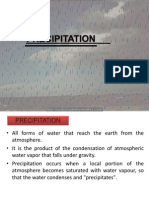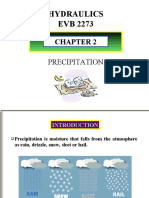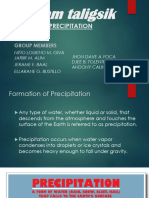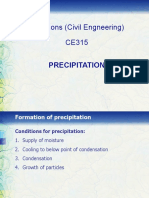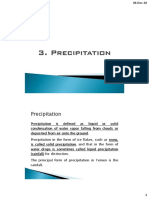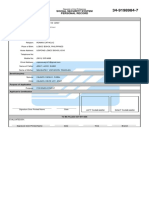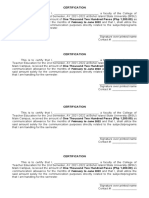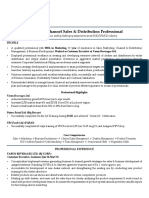0% found this document useful (0 votes)
248 views3 pagesPRECIPITATION Notes
This document discusses types of precipitation and rain gauges. It describes various forms of precipitation including rain, snow, hail, frost and more. It also discusses different weather systems that cause precipitation such as cyclones, anticyclones, and convection. The document outlines how precipitation is formed and measured using rain gauges, including non-recording and recording gauges. Finally, it discusses methods for calculating mean areal rainfall across a region using arithmetic mean, isohyetal, and Thiessen polygon methods.
Uploaded by
Diane Fe CajaroCopyright
© © All Rights Reserved
We take content rights seriously. If you suspect this is your content, claim it here.
Available Formats
Download as DOCX, PDF, TXT or read online on Scribd
0% found this document useful (0 votes)
248 views3 pagesPRECIPITATION Notes
This document discusses types of precipitation and rain gauges. It describes various forms of precipitation including rain, snow, hail, frost and more. It also discusses different weather systems that cause precipitation such as cyclones, anticyclones, and convection. The document outlines how precipitation is formed and measured using rain gauges, including non-recording and recording gauges. Finally, it discusses methods for calculating mean areal rainfall across a region using arithmetic mean, isohyetal, and Thiessen polygon methods.
Uploaded by
Diane Fe CajaroCopyright
© © All Rights Reserved
We take content rights seriously. If you suspect this is your content, claim it here.
Available Formats
Download as DOCX, PDF, TXT or read online on Scribd
/ 3
